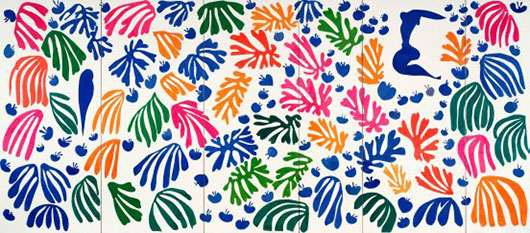AMSTERDAM – With over 100 works on loan from 35 leading international museums including the Tate, MoMA, Musée Matisse, Le Cateau-Cambrésis and the Pushkin State Museum in Moscow, the Stedelijk Museum Amsterdam presents “The Oasis of Matisse,” the most comprehensive survey of the French artist ever shown in the Netherlands. The exhibition, which runs March 27 through Aug. 16, occupies half of the ground floor galleries, the hall of honor and the first floor gallery suite to the rear. Covering over 21,500 square feet, “The Oasis of Matisse” is one of the largest-ever exhibitions in the Stedelijk’s history.
The Stedelijk conceived a unique exhibition concept for “The Oasis of Matisse,” the permanent collection on the ground floor is enriched with a selection of Matisse masterpieces, creating surprising combinations with the work of his contemporaries, teachers and followers. Visitors discover how, in 1914, Mondrian and Matisse were both pushing toward abstraction but in very different ways, and how raw the work of Matisse is when contrasted with German Expressionists like Kirchner.
After following Matisse’s development on the ground floor, on the first floor, visitors enter the oasis that Matisse created as a mature artist. Where the downstairs galleries revealed how the surface became progressively flatter in this part of the exhibition visitors can admire his world-famous cutouts in their full glory. At the heart of this presentation is The Parakeet and the Mermaid, which Matisse considered his finest cutout. This perennial favorite is on display together with other monumental Matisse cutouts that have rarely, if ever, been seen in the Netherlands such as Memory of Oceania from the Museum of Modern Art in New York, The Snail from the collection Tate Modern, London and The Sheaf from the Hammer Museum of Art in Los Angeles. Also featured are seldom-exhibited works in textile and stained glass which were inspired by the cutouts.
As one of the founders of modern art, Henri Matisse (1868-1954) is among the most-admired artists of the 20th century. His favorite subjects include interiors with Eastern nudes, colorful fabrics, carpets, potted plants and idyllic landscapes. Matisse excelled in blending foreground and background into a dazzling pictorial plane – the sumptuous patterns of a tablecloth overflow into a woman’s dress or wallpaper. Matisse seeks inspiration in Algeria, Morocco, Nice and Tahiti. There, he discovers a paradise that he evokes in undulating lines and flat areas of color.
Matisse later became an internationally celebrated artist. So it was all the more astonishing when, at the end of his life, he set off in an entirely new direction to make monumental, ornament-like cutouts. But in surveying Matisse’s entire oeuvre, it is clear that from his earliest modern works until his death the artist sought to evoke a bright, joyous simplicity with the minimum of color and shape.
For the first time, the Stedelijk is offering visitors the chance to reserve a time slot when they buy a ticket, to ensure that everyone gets the most out of their visit to the exhibition. Online ticket sales kicked off this week. When purchasing E-tickets, visitors are asked to choose a date and time. Once inside the museum, they can stay as long as they wish. A ticket surcharge applies: tickets cost 20 euros rather than the usual 15 euros. Visitors pay the surcharge just once (the usual admission price applies to repeat visits). Friends of the Stedelijk have free admission, and can visit as often as they like; they also have access through a special members entrance.



